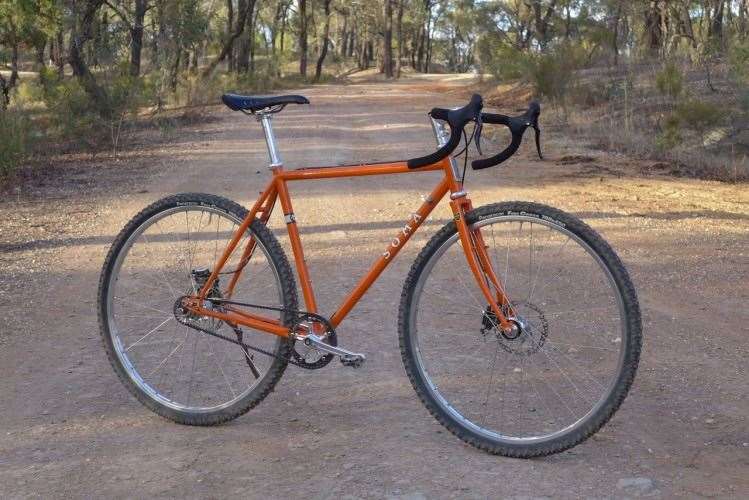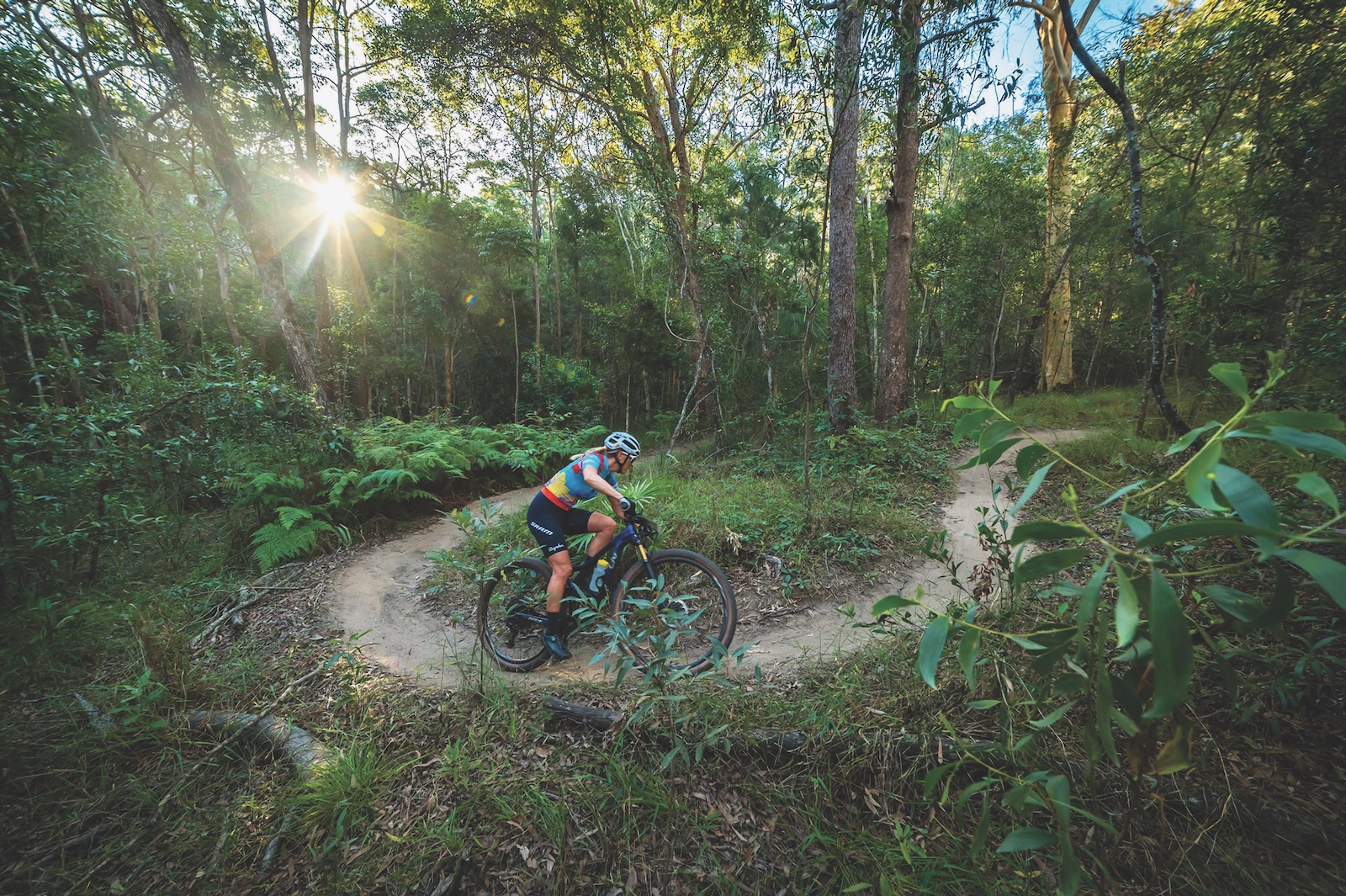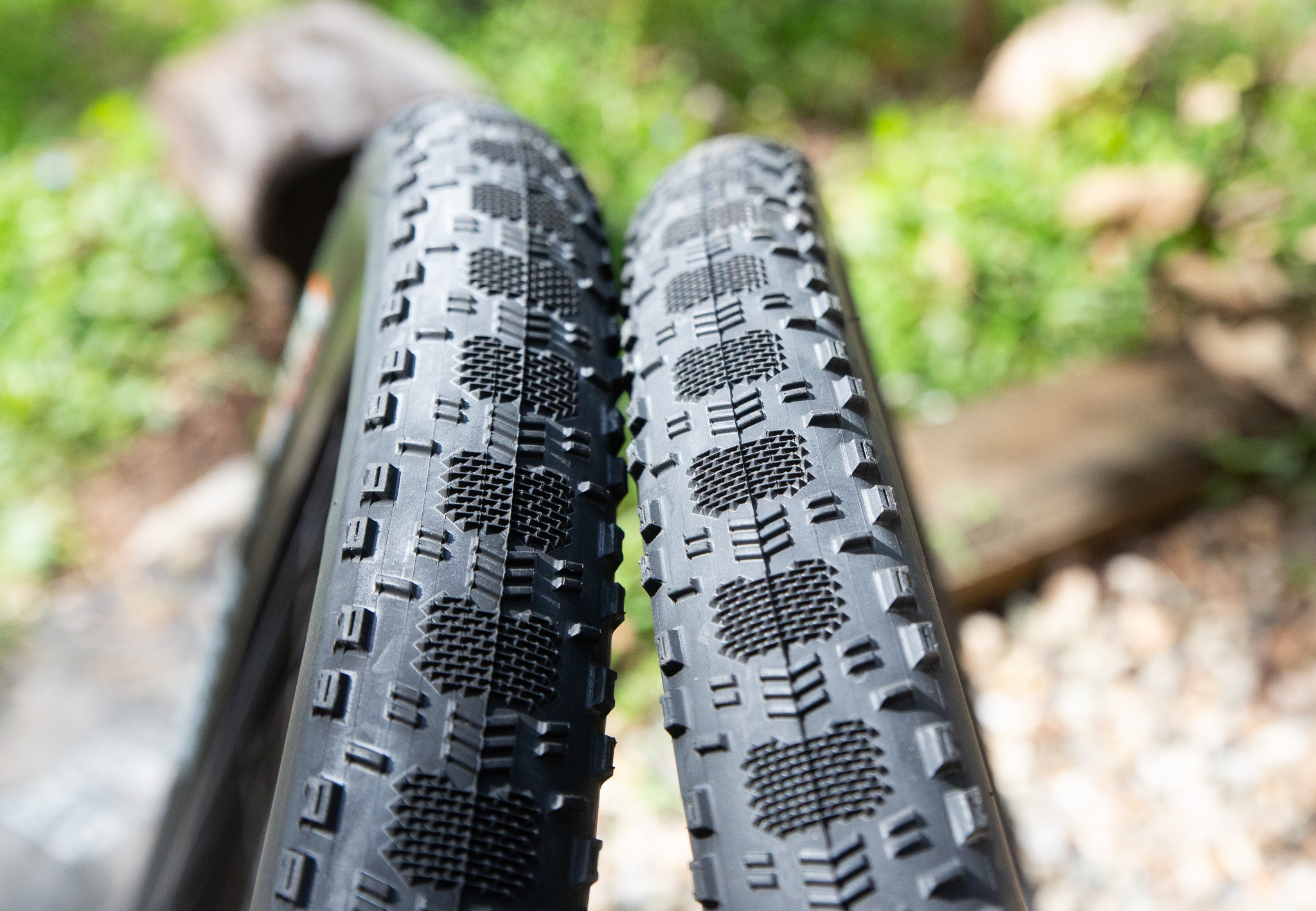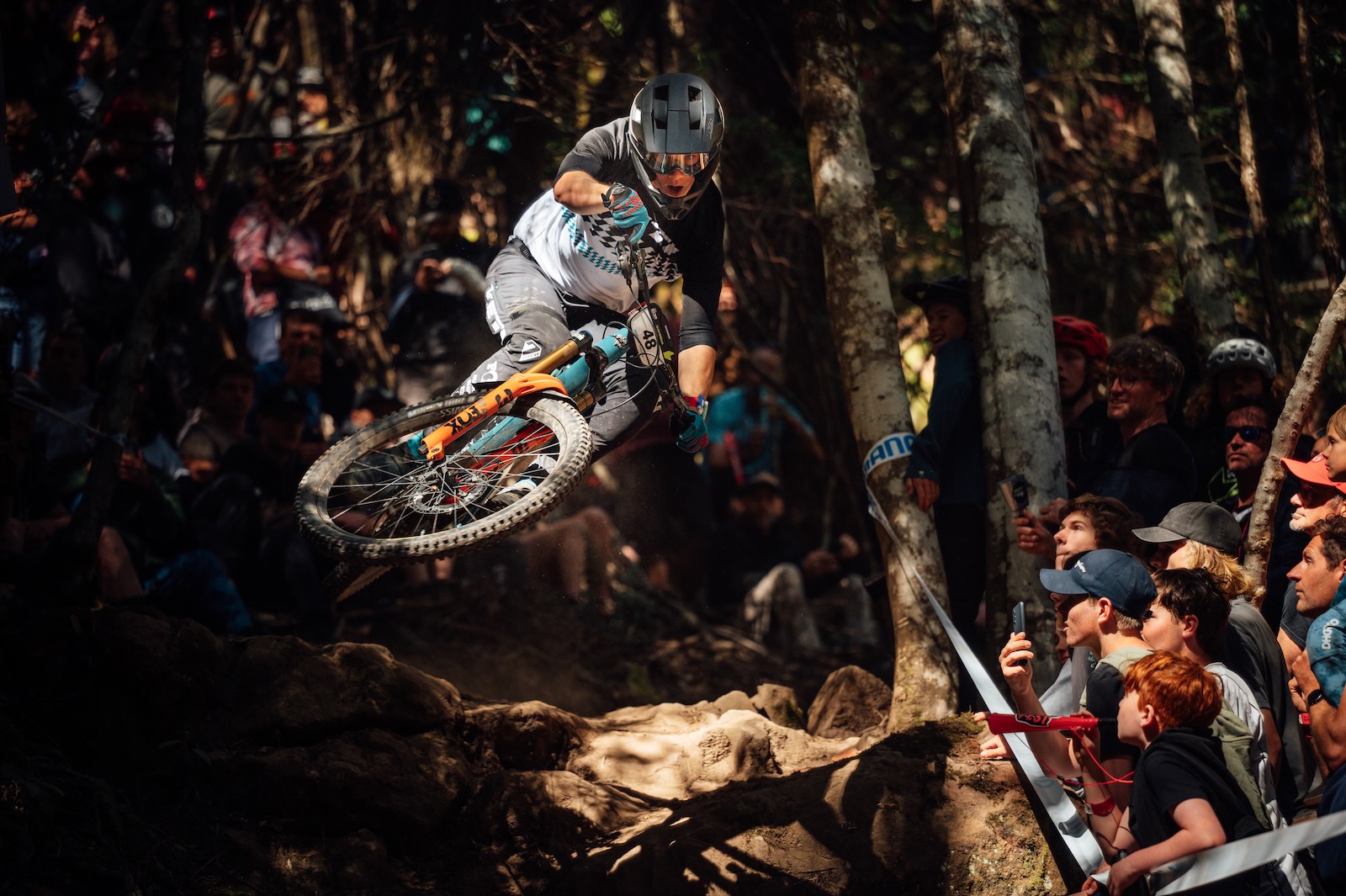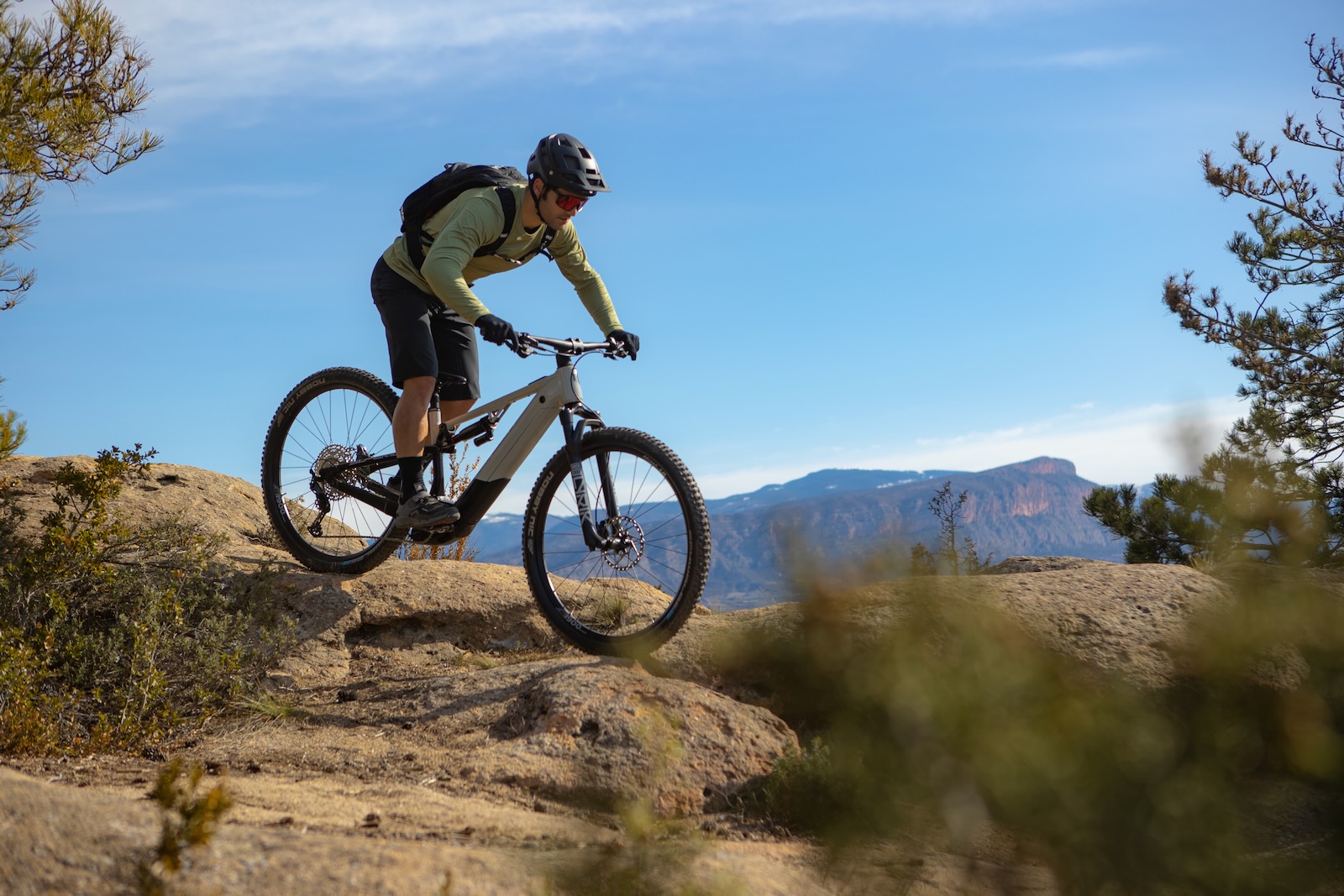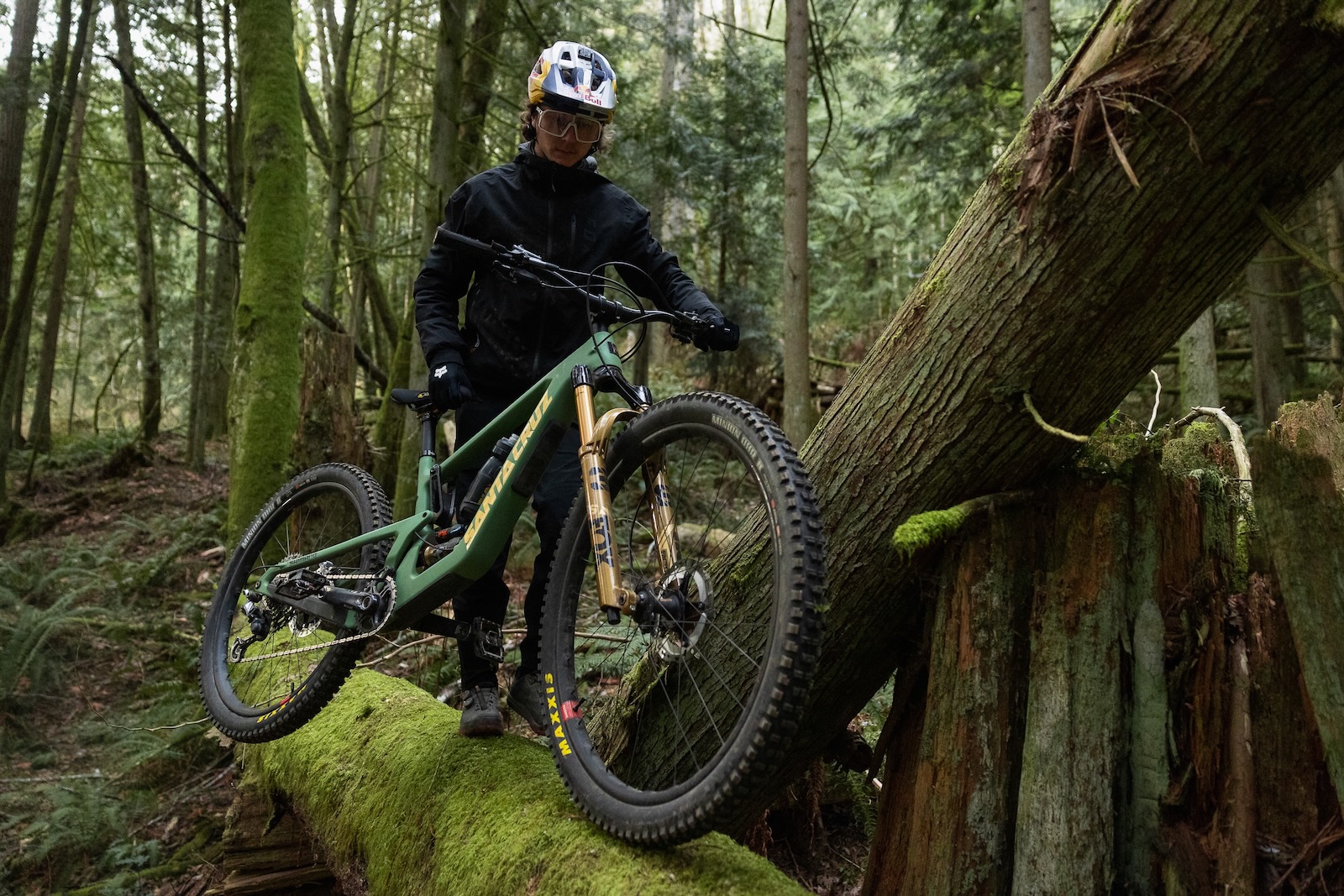TESTED: Gates Belt Drive
If singlespeeds are the ultimate mountain bike experience, the Gates Belt Drive might just add to that.
“The technology behind Gates Carbon Drive is rooted in high horsepower motorcycles and dragsters. Now, this high performance technology has been perfected for a wide variety of bicycles. At the core of the drive is the CenterTrack belt. Custom made, this 11-mm pitch, carbon-fiber belt is stronger than and as efficient as a traditional bike chain. The drive is completed with our innovative sprocket designs and your choice of internally-geared or single-speed hub. The patented Gates Carbon Drive gives you a longer-lasting, lower-maintenance drive, and most importantly, an unbelievably awesome ride.” – Gates
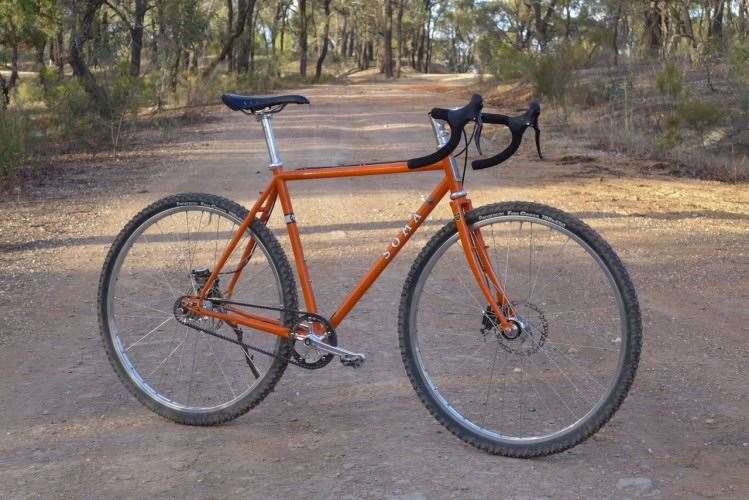 The Soma Wolverine was built with TRP Hy/Rd Disc Brakes and a Gates Belt Drive
The Soma Wolverine was built with TRP Hy/Rd Disc Brakes and a Gates Belt DriveAll photos by Tim Arch.
As Gates point out, the advantages of a belt over a standard steel chain are pretty clear. For a start, a belt is a lot lighter at 80-100 grams depending on the length. As a comparison, most standard bicycle chains weigh closer to 300 grams. Once you factor in chainrings and sprockets, Gates claim that the whole CentreTrack Belt Drive system weighs half that of a conventional chain drive setup. They also claim that it lasts 3 times as long.
The other key advantage of a Belt Drive is that you don’t have a chain to lubricate, as the polyurethane belt simply doesn’t require degreasing or lubricating in the first place. This makes it an ideal option for those riders who want a near maintenance-free setup.
It’s also incredibly strong. Each belt is reinforced with carbon fibre tensile cords running around the length of the belt, which leads to higher tensile strength and a greater resistance to stretching.
But despite the purported advantages, the belt drive hasn’t quite taken off like some people predicted when it was first released all those years ago. So what are the downsides?
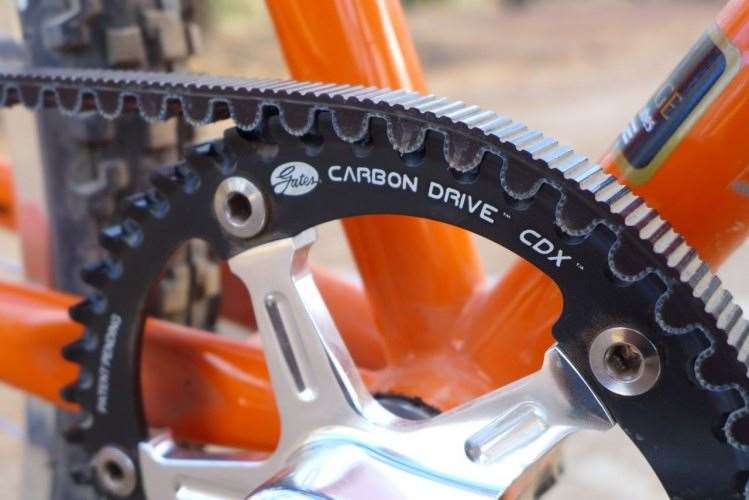
What Are The Downsides?
Well the biggest hurdle is that you need a belt-compatible frame to begin with. Because the belt is one-piece, the rear of the frame needs to be able to open up to thread the belt in. A split dropout design requires more engineering and tighter tolerances, therefore pushing up manufacturing costs.
The other obvious limitation is the fact that it’s incompatible with derailleurs. That’s fine for a singlespeed setup, but the only way to use a Belt Drive with gears is to employ an internal gear hub, such as a Shimano Alfine or Rohloff. These are great options for tourers and commuters due to their enclosed design, which makes them incredibly durable and largely maintenance-free.
IGH’s are less ideal for mountain biking though, as they place all of the weight over the rear axle, leading to a compromise in the bikes handling. That said, there have been some interesting developments by brands such as Pinion and G-Boxx, where the IGH is placed in the middle of the frame at the bottom bracket. Time will tell if these developments become adopted into the mainstream.
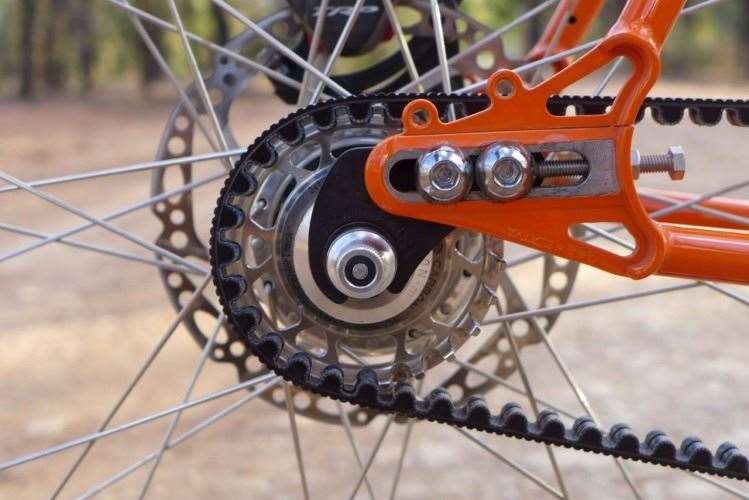
Compared to an equivalent high-end singlespeed drivetrain, the Gates setup is a little more expensive, but not ridiculously so. The bigger issue is the fact that the belt is one-piece and cannot be shortened or lengthened. This means you’ll want to get your ratio right before committing to buying the cogs and belt, as a replacement belt will cost you $90, and sprockets are $130 each. There are also limited BCD options for the front cog, so it does limit some cranksets being setup with a belt.
Overall the belt drive is a little trickier to have multiple gear ratios for different racecourses. Not impossible, just more expensive and more time intensive than a standard chain drive setup.
Belt Fitting & Choosing Ratios
The Gates Carbon Belt Drive system comprises of three components: the belt, the front sprocket and the rear sprocket. The front sprocket (chainring) is available in sizes from 39t through to a huge 60t size, in both 4-bolt and 5-bolt patterns. They’re machined from alloy before being anodized. The rear sprocket slides onto a conventional cassette body and comes in sizes from 20t through to 32t, while being made from stainless steel.
Our test belt drive employs the newer CentreTrack design, which features a central spine running through the middle of the sprocket teeth. This spine interlocks with a corresponding channel on the inside of the belt. This creates a snug interface that helps to keep the belt tight against the sprockets.
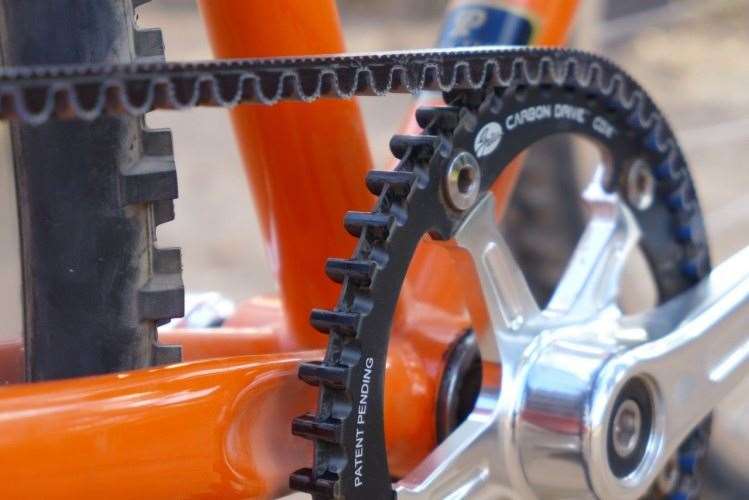
For the Wolverine test bike, I elected for a fairly easy ratio that used a 46t front cog with a 24t rear cog. In order to get setup correctly, I spoke with Trevor at Black Mountain Sports, who took the Wolverine’s chainstay length to calculate what length belt I would require for the 46/24t combo. There are multiple length belts available depending on what ratio you want to run and how long the chainstays are on your bike. The current setup has proved to be ideal for most XC trails that I’ve been riding the Wolverine on, though more powerful riders will want to elect for a smaller rear sprocket.
On the note of installation, there is a special Gates tension meter tool (available separately) that is designed to assist you with tensioning the belt. Alternatively, there is an app you can download for your smartphone to check the sonic frequency of the belt at the correct tension. However, you will require a specific tool to remove the rear sprocket, as a conventional chain whip obviously won’t work.
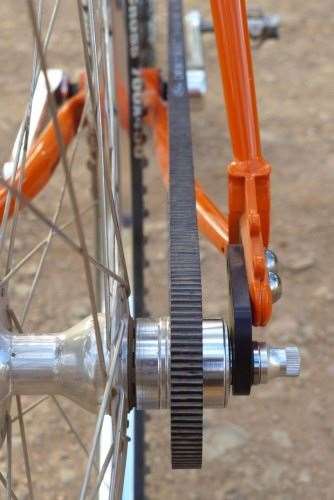
The Sound Of Silence
The first thing I noticed when setting out with the Gates belt drive was nothing. No noise, no movement, nothing. The quiet operation of the belt drive is one of the main draw cards over a conventional setup, and I found myself noticing the noise on my other bikes a lot more.
This stealthy performance works alongside the functionality of a singlespeed beautifully. For me, there is something elegant about the simplicity of a rigid singlespeed, and the belt drive only added to that experience. With my mind free from distraction, I found that rides on the Wolverine were a lot more engaging compared to riding the same trails with a full suspension mountain bike.
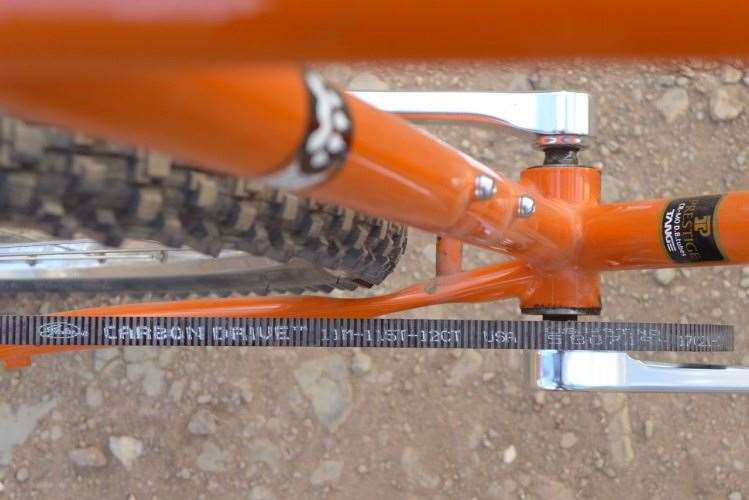
After the first couple of rides I did have to back the tension off the belt a fraction, as the tight setup was causing some clicking noises from the rear freehub that was being loaded up more than usual. Once settled in though, I’ve had nothing but perfect performance. The satisfaction of not having to worry about cleaning and maintaining a chain is probably why most belt-drive owners look so smug all the time.
While the belt doesn’t require any lubrication, it does get squeaky when conditions are really dusty. A quick spray from a water bottle gets rid of it instantly, but long rides on dry and dusty XC trails did leave me a little frustrated with the squeak given how quiet the belt normally is.

Purely Belter
Gates have produced a compelling argument for their high performance CentreTrack Carbon Belt Drive system, which possesses a number of key advantages over a conventional chain drive. It’s also finished incredibly well, with beautifully crafted sprockets and the tough carbon fibre-reinforced belt.
Would I recommend the Gates Carbon CentreTrack Belt Drive? Absolutely, providing you can manage its idiosyncrasies. You will want to make sure you’ve got the right ratio before committing to buying the whole setup, but once you do, the system is quiet and it’s very light.
Hits
- Lightweight
- Stealthy quiet
- Looks badass
Misses
- Requires a split-dropout frame to fit
- Difficult to change ratios
Brand: Gates
Model: CDX Centretrack Belt, CDX Sprocket
RRP: $90 (Belt), $130 (Front 46t Sprocket), $130 (Rear 24t Sprocket)
Contact: www.blackmountainsports.com.au

